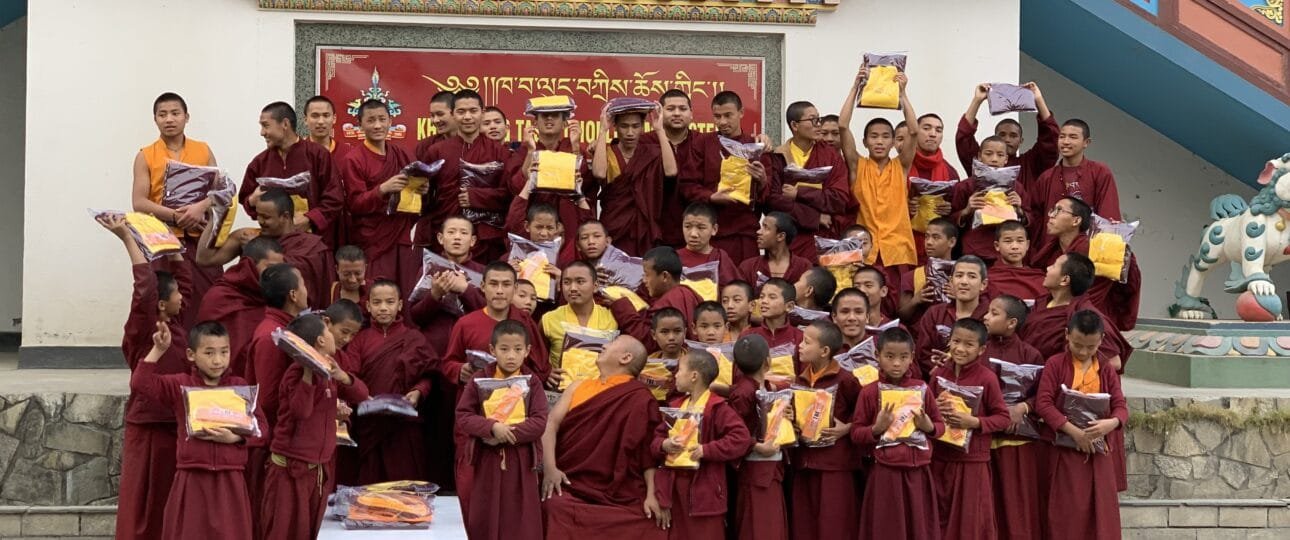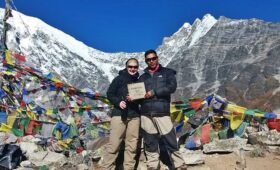Introduction
Why Volunteer in a Buddhist Monastery?
“The best way to find yourself is to lose yourself in the service of others.” – Mahatma Gandhi.
Imagine waking up in the serene mountains, surrounded by the rhythmic chanting of Buddhist monks. The crisp morning air fills your lungs as the sun’s golden rays illuminate the ancient monastery walls. You sip on a cup of warm butter tea, preparing for a day of teaching English to young monks, assisting with daily monastery tasks, and immersing yourself in Buddhist philosophy.
Volunteering in Buddhist monasteries is an experience unlike any other. It offers a unique blend of spiritual exploration, cultural exchange, and meaningful service. Every year, thousands of international volunteers travel to Nepal, India, Bhutan, and Thailand to contribute their skills while learning the profound teachings of Buddhism. According to the Nepal Tourism Board, over 1.1 million tourists visited Nepal in 2023, many seeking immersive cultural and volunteer experiences.
But how can you volunteer in a Buddhist monastery in Nepal? What are the requirements? What can you expect from daily life? And, more importantly, how can you make a lasting impact? This comprehensive guide explores everything you need about volunteering in Buddhist monasteries.
2. What Does It Mean to Volunteer in a Buddhist Monastery?
Volunteering in a monastery is not just about assisting—it’s about participating in a centuries-old tradition of discipline, mindfulness, and service.
a. What Do Buddhist Monastery Volunteers Do?
The responsibilities of a Buddhist monastery volunteer vary based on the location and needs of the monks. Common tasks include:
✔ Teaching English to Buddhist monks (especially young novices aged 6-18)
✔ Helping monks with basic computer skills and communication
✔ Assisting with monastery upkeep (cleaning, gardening, cooking)
✔ Engaging in cultural exchange (sharing your language, traditions, and perspectives)
✔ Participating in meditation and prayers to understand Buddhist teachings firsthand
b. Who Are You Teaching?
Most monastery volunteers work with young novice monks, who often join monastic life at an early age. English is a crucial skill for them because it helps them:
✔ Study Buddhist texts that have been translated into English
✔ Communicate with international visitors who come to learn about Buddhism
✔ Participate in global Buddhist conferences and teachings
c. A Two-Way Learning Experience
While you help Buddhist monks develop new skills, they also introduce you to Buddhist philosophy, mindfulness, and the art of living simply. This exchange benefits both sides.
3. Why Volunteer in a Buddhist Monastery?
Volunteering at a Buddhist monastery is not your average travel experience. It’s an opportunity to immerse yourself in Buddhist culture, develop a more profound sense of mindfulness, and contribute to something meaningful.
a. Personal Growth & Spiritual Enlightenment
Modern life can be stressful and overwhelming. Spending time in a monastery offers:
✔ A chance to disconnect from digital distractions
✔ Time for self-reflection and mindfulness
✔ An opportunity to practice meditation and inner peace
Many volunteers find their perspectives on life change after spending weeks or months living among monks.
b. Deep Cultural Immersion
Unlike typical tourists, monastery volunteers live alongside monks, experiencing their daily routines, meals, and spiritual practices firsthand. You’ll gain insights into:
✔ Buddhist rituals and traditions
✔ Monastic discipline and daily life
✔ The philosophy behind mindfulness and meditation
c. Making a Lasting Impact
While monks dedicate their lives to spiritual growth and knowledge, many struggle with language barriers and modern education. Your time and expertise can help them:
✔ Improve their communication skills
✔ Gain access to global Buddhist teachings
✔ Bridge the gap between traditional monastic life and modern society
4. Where Can You Volunteer?
Buddhist monasteries across Asia welcome volunteers. Each country offers a unique monastic experience based on its Buddhist tradition.
a. Volunteering in Buddhist Monasteries in Nepal
Nepal, the birthplace of Lord Buddha, is home to over 3,000 monasteries, many of which welcome international volunteers. Popular locations include:
✔ Kathmandu Valley – Monasteries like Kopan, Pullahari, and Shechen offer structured volunteer programs.
✔ Pokhara – A peaceful lakeside city with monasteries needing English teachers.
✔ Everest Region – Remote monasteries provide an off-the-grid experience.
b. Buddhist Monastery Volunteer Programs in India
India is the spiritual hub of Buddhism, especially in areas like:
✔ Dharamshala – Home to the Dalai Lama and Tibetan Buddhist monasteries.
✔ Sikkim & Ladakh – Himalayan regions with thriving Buddhist communities.
c. Volunteering in Buddhist Monasteries in Bhutan
Bhutan is known for its strict tourism policies, but some monasteries allow volunteers through government-approved programs.
d. Thailand & Sri Lanka: Theravāda Buddhist Monasteries
Many Theravāda Buddhist monasteries in Thailand and Sri Lanka welcome volunteers to teach English and assist with community projects.
5. How to Apply for a Monastery Volunteer Program
a. Finding the Right Organization
To ensure an ethical and meaningful experience, apply through reputable volunteer organizations such as:
✔ Volunteers Initiative Nepal (VIN)
✔ Kopan Monastery
✔ Oseling Monastery
b. Application Process
✔ Submit an online application
✔ Provide necessary documents (passport, resume, background check)
✔ Attend an orientation session
c. Visa Requirements
Nepal requires a volunteer visa, which can be obtained through the Department of Immigration.
6. Daily Life as a Monastery Volunteer
Life in a Buddhist monastery follows a structured yet peaceful rhythm.
a. Daily Schedule
- 5:00 AM – Wake up & morning prayers
- 7:00 AM – Breakfast
- 9:00 AM – 12:00 PM – Teaching English to monks
- 1:00 PM – Lunch & rest
- 3:00 PM – 5:00 PM – Cultural exchange & monastery tasks
- 6:00 PM – Evening prayers & meditation
b. Accommodation & Meals
✔ Simple shared rooms with basic amenities
✔ Vegetarian meals (rice, lentils, vegetables)
✔ Limited access to technology & internet
7. Challenges of Volunteering in a Buddhist Monastery
While the experience is rewarding, there are challenges:
✔ Language barriers – Patience and creativity help in teaching.
✔ Adapting to monastic discipline – Early mornings, modest dress, and no alcohol.
✔ Cultural sensitivity – Respecting traditions and rules is essential.
8. Volunteer Testimonials: Real Stories, Real Impact
a. Sarah, UK
“Teaching monks in Nepal was humbling. Their kindness and wisdom changed my perspective on life.”
b. Liam, Australia
“I went to teach English but left with a deeper sense of peace and understanding.”
9. Preparing for Your Volunteer Journey
a. What to Pack
✔ Modest clothing
✔ Comfortable shoes
✔ A meditation journal
b. Mental Preparation
✔ Be ready for a slower pace of life
✔ Keep an open and humble attitude
10. Conclusion: A Journey That Stays with You
Volunteering in Buddhist monasteries is more than just a trip—it’s a transformational journey of service and self-discovery. Whether you teach English to monks, practice meditation, or help maintain a monastery, you will leave with a renewed sense of purpose and peace.
Are you ready to embark on this life-changing adventure? Take the first step today! Apply now


